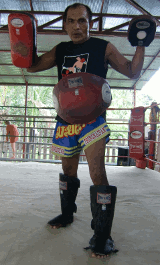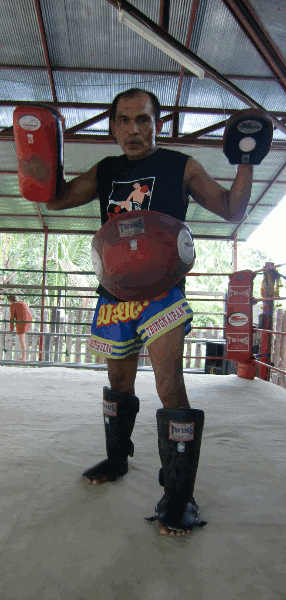History
The history of amazing Muay Thai
One of the most exciting sports in the world, Muay Thai boxing has a history which is interwoven with Thailand’s amazing past. From the rice fields of the north, to royal palaces, to the isolated southern islands, you can’t go far in Thailand without encountering Muay Thai boxing rings and camps.
Thais study Muay Thai from an early age in school, families enjoy the entertainment that Muay Thai provides, and fighters are taken into camps as young as ten to learn the most distinguished of sports. Added to that Muay Thai is traditionally supported by the Kings of Thailand, and actively promoted by the government, so it’s a powerful art within Thai culture.
Muay Thai is synonymous with Thai culture, Thai strength and Thai national pride. Nowadays Thai fighters are delighted to be bringing Muay Thai to the world, as the sport undergoes a global popularity previously unknown in its history.
Muay Thai – The Art of Eight Limbs
Muay Thai is known as the “Art of Eight Limbs” because, unlike other forms of martial arts, elbows, and knees, as well as punches and kicks are used, giving the boxer eight points of contact rather than the usual two with the fists.
It is for this reason that Muay Thai is one of the most powerful, and one of the most dangerous of martial arts.
The origins of Muay Thai
It is thought Muay Thai developed from ancient forms of hand to hand combat used by the Siamese military. Before that it may have evolved from Chinese martial arts, or from similar forms of combat in Khmer culture in Cambodia and Laos.
Muay Thai as the sport of Kings….
While Muay Thai had always been enjoyed by the nobility it truly became the sport of kings with the ascension of King Chulalongkorn to the throne. Known as Rama V, King Chulalongkorn was responsible for a renaissance in Thai culture, and in the ancient art of Muay Thai particularly.
Rama V’s patronage of the sport raised it to high levels in society and Muay Thai became not just a recreational activity but a means of advancement. Later Rama VII was responsible for modernising the sport, making it safer and standardising the rules.
It is during this period that camps sprang up around the country, taking young trainees under their wing to learn from the masters, a tradition continued today. Young fighters grow up as part of the family, training under their mentors and coming to maturity within the camps. For many poor families Muay Thai has provided not just an opportunity, but a means of survival.

